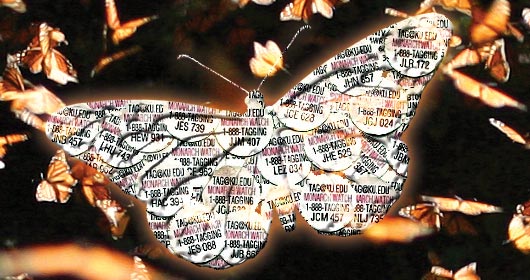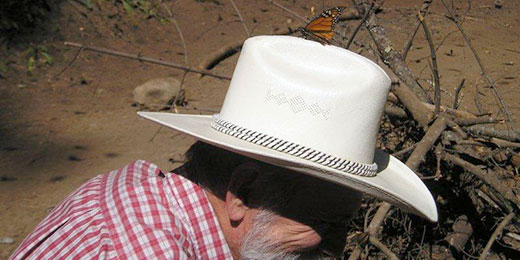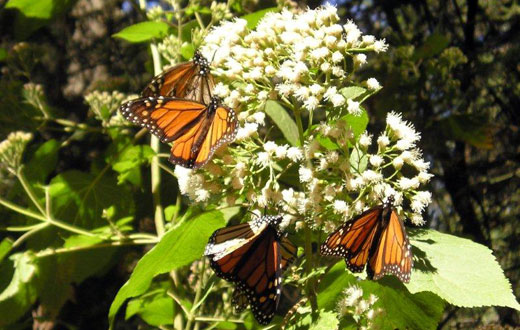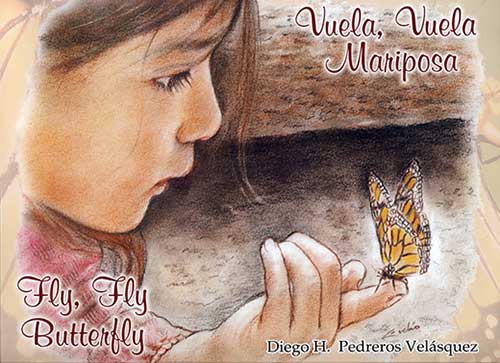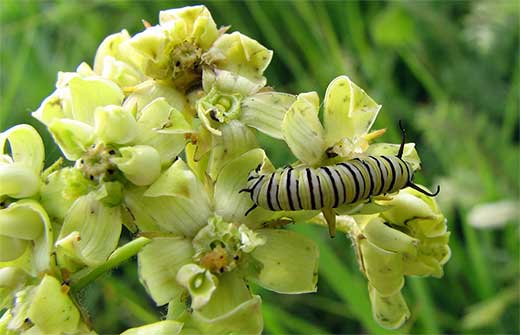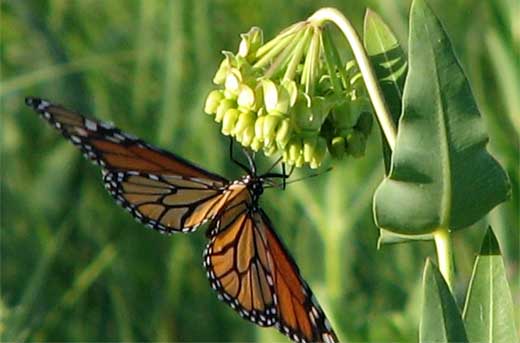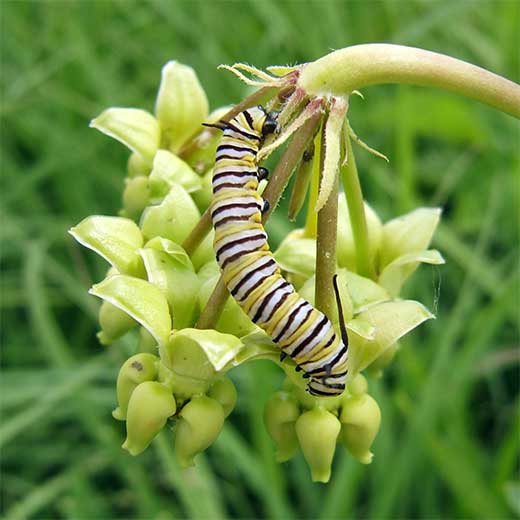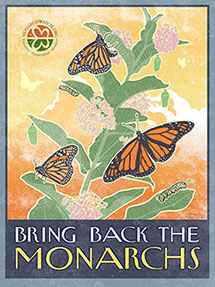Monarch Population Status
26 April 2011 | Author: Chip Taylor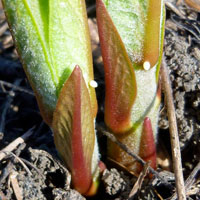 I’ve been monitoring the reports of returning monarchs quite closely this spring. The pattern of the return this year is similar to that seen in 2006 but more exaggerated, with more monarchs moving into the mid latitudes (35-42N) than in any previous April (see Journey North’s first sighting reports). As I pointed out last spring on our email discussion list and in a text written for our May 2006 email update, such early arrivals at more northerly latitudes are not necessarily a good thing. If these butterflies arrive when the milkweeds are above ground and abundant followed by temperatures that allow for normal development of eggs, larvae and pupae – all is well. But, all isn’t well this year. Monarchs arrived in our area (38.97N) in good numbers on the 10th of April with egg laying noted from the 10th through the 15th with some additional eggs on the 18th and later. Milkweeds were scarce -being found in gardens, burned over areas and the edges of roads. Milkweed sprouts in fields were not up or were hidden beneath grasses and weeds. Unfortunately, the temperatures have been colder than normal and none of the hundreds of milkweed stems I’ve surveyed have shown signs of larval feeding even though most of these plants had eggs at one time. At this writing – 26 April – it appears that most of this early reproduction won’t be successful. If so, moving into the mid latitudes earlier than normal will not contribute substantially to population growth this year. In short, it would have been better had these monarchs laid these eggs further south where temperatures were more favorable for growth and development.
I’ve been monitoring the reports of returning monarchs quite closely this spring. The pattern of the return this year is similar to that seen in 2006 but more exaggerated, with more monarchs moving into the mid latitudes (35-42N) than in any previous April (see Journey North’s first sighting reports). As I pointed out last spring on our email discussion list and in a text written for our May 2006 email update, such early arrivals at more northerly latitudes are not necessarily a good thing. If these butterflies arrive when the milkweeds are above ground and abundant followed by temperatures that allow for normal development of eggs, larvae and pupae – all is well. But, all isn’t well this year. Monarchs arrived in our area (38.97N) in good numbers on the 10th of April with egg laying noted from the 10th through the 15th with some additional eggs on the 18th and later. Milkweeds were scarce -being found in gardens, burned over areas and the edges of roads. Milkweed sprouts in fields were not up or were hidden beneath grasses and weeds. Unfortunately, the temperatures have been colder than normal and none of the hundreds of milkweed stems I’ve surveyed have shown signs of larval feeding even though most of these plants had eggs at one time. At this writing – 26 April – it appears that most of this early reproduction won’t be successful. If so, moving into the mid latitudes earlier than normal will not contribute substantially to population growth this year. In short, it would have been better had these monarchs laid these eggs further south where temperatures were more favorable for growth and development.
In addition to watching the pattern of the returning butterflies, I monitor other conditions – temperature, rainfall, drought, abundance of fire ants, etc., as they play out each month of the breeding season. As you’ve heard from me before, Texas is key. For the monarchs to have a good year, the conditions in Texas for the first generation have to be favorable. If they are, the population grows, as it did last year. If unfavorable, as they have been in a number of years such as 2004, the population declines. Conditions in Texas this spring have been hot and dry – a significant drought. Milkweeds have been abundant and nectar seems to have been available in most locations but due to high winds and temperatures monarchs just kept moving. The result is that monarchs are not off to a good start and the prospects that the population will rebound in the summer months are getting slimmer each day.
At the end of March, I was saying that the population this coming winter would be no greater than 5 hectares due to conditions in Texas. In contrast, at the end of March in 2010 it was quite clear that the population was going to increase and the only question was by how much; it more than doubled from 1.92 to 4.02. It now appears that the 5-hectare prediction was too optimistic. Four hectares (4.02 last year) is possible but not too likely. If the long-range forecasts for the northern breeding areas are accurate, and they have been recently, the prospect for producing a large monarch population in and north of the corn belt is not great. In fact, the population could drop back to 2009 numbers (1.92 hectares), if the summer is as cold as forecast.
In a week or more – weather permitting – first generation monarchs from Texas should begin migrating through this area to colonize the northern breeding areas. The numbers reaching these northern habitats is largely a function of reproduction in Texas and the weather conditions in May. Reproduction is Texas has yet to play out in numbers, but if past seasons are a good measure, the number moving northward should be less than expected based on the size of the overwintering population. Below normal temperatures are projected for May, which, if true, would limit the number of monarchs reaching the milkweed patches throughout the northern breeding area and ultimately the size of the fall migratory population. While we can hope that the long-range forecasts are wrong, and that reproduction will be higher than I’m envisioning, the prospects – at this date – favor a migration that will result in an overwintering population of 2-4 hectares.
We can’t do anything about the physical conditions that drive the monarch population but we can provide the milkweed and nectar resources they need – PLANT MILKWEED!
Filed under Monarch Population Status | 5 Comments »